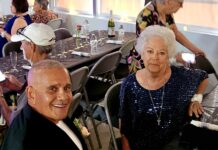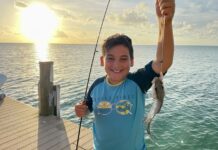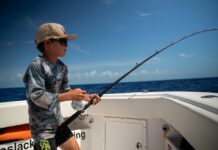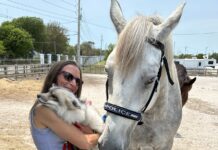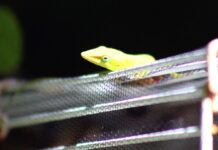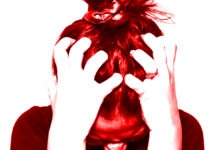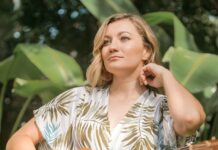Affectionately called the gray ghost because of the ethereal quality of its evading capture, the bonefish has held Tim Borski’s imagination for as long as he can remember.
Everything was going perfectly. Borksi just arrived in Miami; he had never fished for bonefish before, but he had an ace in hand. Legendary angler Bill Curtis was his guide.
The Borski family comes from a place far removed from the tropical wonderland — a place north and terribly cold — Wisconsin. Borski was an outdoorsman: he lived in a cabin in Stevens Point. He hunted and fished. He went to college at Wisconsin-Stevens Point and took a watercolor class that introduced him to one of his great passions in life, painting.
The winters were nothing to ignore. One day, Borski saw that there were 9 inches of fresh snow on the ground. Spending winter after winter in bitter cold just got to him. He went to the bank and took his student loan money and booked a round-trip plane ticket to Miami.
As fate would have it, Bill Curtis had a last-minute cancellation and took Borski out. Finally, at the end of the day, he caught his bonefish. Borski just picked up a six-pack of beer at a convenience store. When a nearby Dumpster caught his eye, he took his return ticket and threw it out. This is where he was going to be. This is Tim Borksi, the artist who wanted to fish.
At first Borski tried traditional jobs; he worked retail and stocked shelves. He eventually found a job where he could work a few days a week and fish the rest of them. It was through this job in an arts and crafts store that he met Frank Oblak, who taught Borski the basics of fly-tying. He would come to the Florida Keys and fish for mostly tarpon and snook.
“I just fell in love with the wide-open spaces of the Keys,” Borski said.
Borski’s flies gained popularity and is an essential part of him being an artist. As Borski says, “My flies are unique — they are kind of an abstract contemporary version of a fly.” Borski was also working on his art. With the flies selling well and giving Borski attention, the artwork started to do well, too.

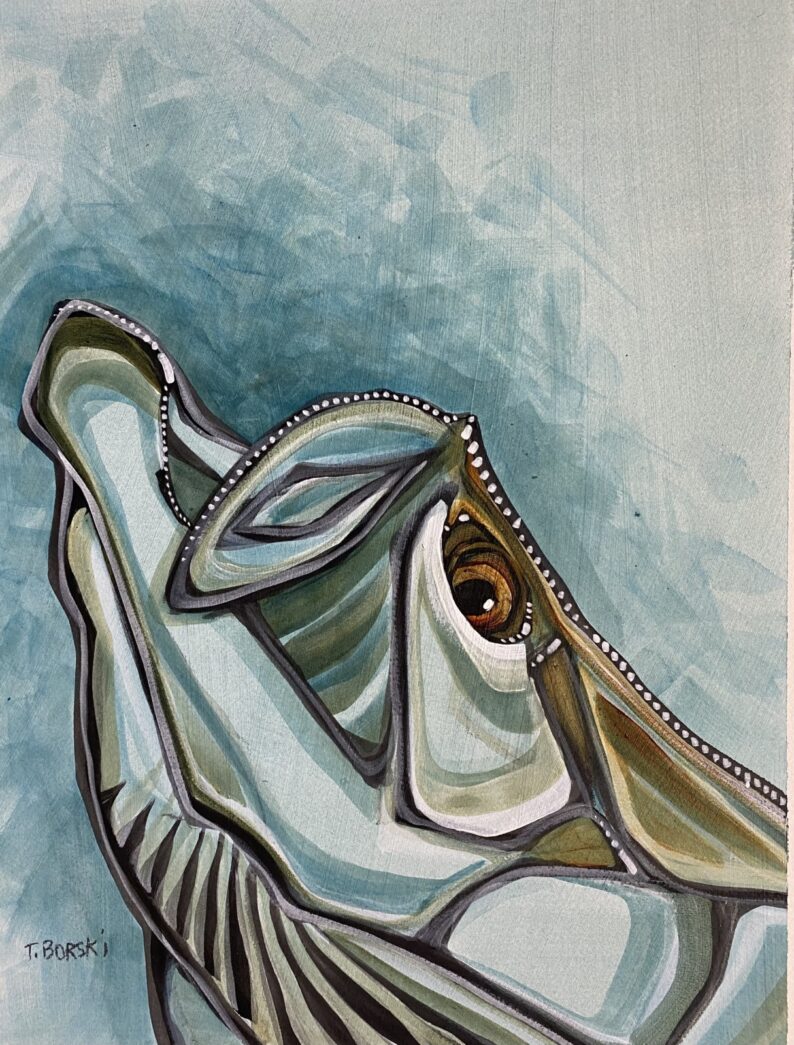
With each of Borski’s works, he wants it to be interesting, he wants to push the envelope with his art. He also took a job as the caretaker for Craig Key. This would give him enough time to do his art, work on his flies and, most importantly, fish. Fishing tournaments helped Borski get more serious with his paintings. He started making bigger canvases.
Borski’s contemporary wildlife art is visually distinctive, with bold outlines and unique color combinations. The bold brushstrokes and abstract backgrounds might make you think you were looking at a piece of modern art, if it were not for the fish or bird that comfortably lives in the painting. Borski’s style is identifiable.
“It is just something that I like,” Borski said. “I’ll work on a painting and that is just the way it comes out. It is the way I see it. It is just the way I like it and that just turns out to be that style. If the finished product is cool and I like it, then I put my name on it. If I don’t like it, I won’t put my name on it.”
Borski doesn’t have a real favorite artist who inspires him; he enjoys impressionism but his interests lie more in the literary realm. He enjoys reading books while on his adventures. His biggest inspiration is fishing and the wide-open spaces of the Florida Keys and the wildlife that inhabits it. As to how Borski gets his painting ideas, he said it just comes to him. He likes painting birds besides his classic fish for which he is well known. The birds he paints are not commercial birds; you won’t catch him painting a pelican on a pier or a flamingo. Borski’s process starts with a sketch; if he likes it, he continues and starts to paint. He paints mostly in acrylics. The focus of the artwork is usually the eyes.
Borski’s life is the pursuit of fishing. His aim is to live life and not sacrifice his time to traditional work. Instead, he paved a path that had fishing come first.
“I didn’t want to become a guide, because then fishing became work,” he said. Instead, he did work that was fish- and outdoor-adjacent. Borski’s work can be found at the Angling Company in Key West. More information is at timborskiart.com, 305-393-2684 or timborskiart@gmail.com.



